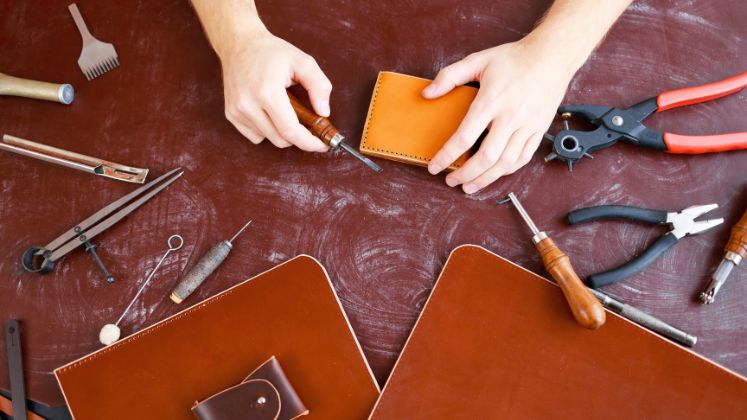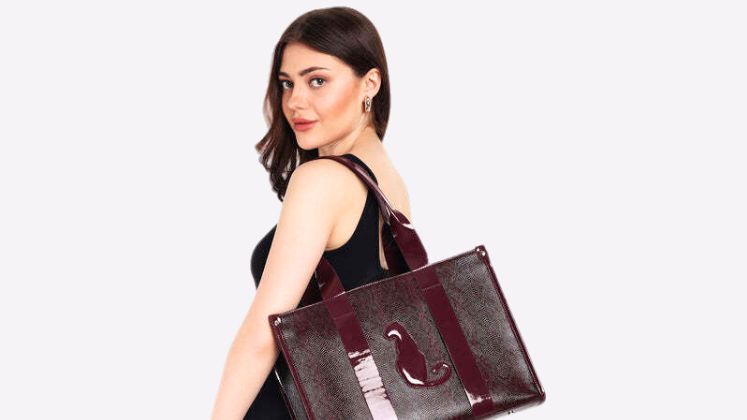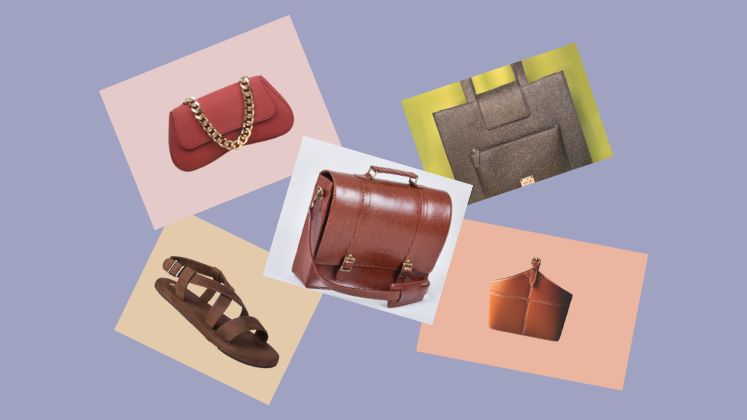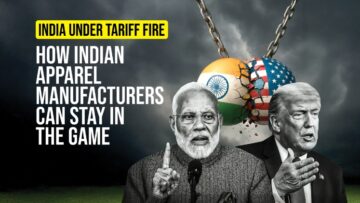The fashion industry, particularly the leather segment, has faced scrutiny for its environmental impact. Traditionally, leather is made by sourcing animal hides, which involves intensive farming methods, chemical-laden tanning and substantial environmental damage.
In response, a wave of innovation is emerging, with biomaterials manufacturers and brands focusing on creating eco-friendly leather alternatives.
Biomaterials manufacturers like Malai Eco, Banofi, BioLeather, Fleather by Team PHOOL, Zaibunco Industries Pvt. Ltd., Responsive Industries Ltd., Giriraj Coated Fab Pvt. Ltd., and Response Fabrics India Pvt. Ltd., are leading the charge.
Meanwhile, brands such as Planet Paaduks, The Gusto, Zouk, Tiger Marron, Mokobara, Aulive, Sarjaa, A Big Indian Story, Broke Mate, Paio, Arture, Moon Rabbit, The Cai Store, The House of Ganges and Achilles’ Heels are embracing these sustainable materials to offer consumers vegan and ethical fashion choices.
Established brands such as Allen Solly have also introduced a range of products made from materials like apple peels and cactus leaves.
Globally, leading brands like Stella McCartney, Gucci, Hermes, Adidas, Lululemon, Tommy Hilfiger, Balenciaga are also experimenting and switching to leather alternatives. Hugo Boss has launched a plant-based pineapple leather shoe range and fast-fashion chain H&M also launched its special Conscious Exclusive collection using vine leather.
Hermes and Lululemon collaborated with biomaterials company MycoWorks known for sustainable textiles and fibres. Hermes used Fine Mycelium, mushroom-based leather for its classic Victorian bags and Lululemon used alternative leathers for its sustainable range of bags and yoga mats. Adidas also uses mycelium for some of its sustainable range of footwear and brands under the Kering group have also started opting for pure leather substitute.
Even celebrities are advocating for vegan fashion. International icons like Miley Cyrus, Emma Watson, Serena Williams, Joaquin Phoenix, Natalie Portman and Benedict Cumberbatch are vocal supporters of the same. In India, figures such as Sunny Leone, Dia Mirza, Sonakshi Sinha, Jacqueline Fernandez and Milind Soman are championing this eco-conscious movement.
Vegan Leather Market Booms as Sustainability Takes the Lead
According to Vantage Market Research, the global vegan leather market was valued at US $ 60.4 million in 2023 and is projected to reach US $ 131.7 million by 2030. Products with environmental, social and governance-related claims gain 1.7 percentage points of sales growth compared to products that don’t, according to a report by McKinsey & Company. Millennials and Gen Z are particularly willing to pay extra for eco-friendly products.
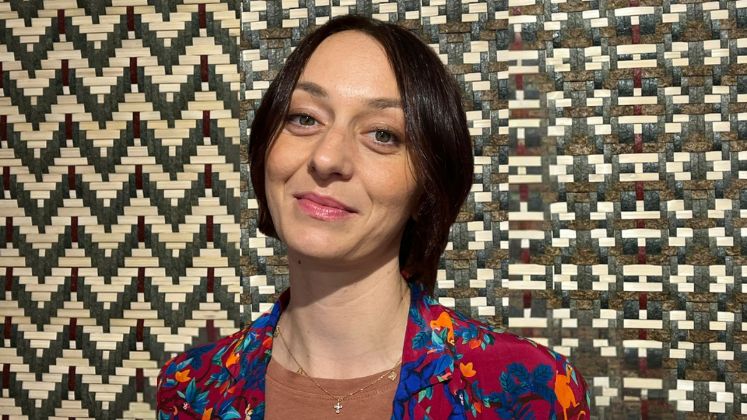
“The market for vegan leather is predicted to grow every year due to higher demand for more environmentally friendly material in many industries,” said Zuzana Gombosova, Co-founder, Malai Eco, the makers of Malai, a biocomposite material made from organic and sustainable bacterial cellulose. This cellulose is grown using agricultural waste from the coconut industry in Southern India. By collaborating with local farmers and processing units, the company collects coconut water that would otherwise be discarded and harm the soil. It repurposes the water to nourish the bacteria’s cellulose production, with one small coconut-processing unit able to provide 4000 litres of water per day, enough to produce 320 square metres of Malai. This is equivalent to its expected yearly production capacity.
Zuzana mentioned that Malai can be used in many of the same ways as animal leather—it can be sewn by hand or machine, cut, embossed, glued and skived. The material is lightweight, hygroscopic and has good shape memory. Malai is still in the R&D phase to improve its tensile strength, abrasion resistance and elongation. It has been successfully tested for light footwear, sandals, slippers and accessories like bags, wallets and pouches. The biomaterial is currently supplied to over 20 domestic and international brands.
Another biomaterials company, Banofi, has found a creative way to use banana waste. India, being the world’s largest producer of bananas, generates 4 tonnes of waste for every 1 tonne of fruit, most of which ends up discarded.

“Our process begins by sourcing banana crop waste directly from farmers, who would otherwise discard it. From this waste, we extract fibres, which serve as our primary raw material. These fibres are combined with a blend of natural gums and adhesives and finished with layers of colours and coatings. This material is then coated onto a fabric backing, resulting in a durable and robust material that is 80 per cent – 90 per cent bio-based. Our proprietary material, Ban-o-Fi (Banana Fibre Leather), has a significantly lower environmental impact than both animal and plastic leather,” said Jinali Mody, Founder and CEO, Banofi.
The company produces over 3,000 sheets of vegan leather each year, with each panel measuring 39 inches by 27 inches. Jinali pointed out that around 10K litres of water are required for one leather bag and 90 per cent of animal leather tanned use carcinogens like chromium.
| 1,942
Planet Padukas, a D2C brand offering vegan handcrafted men and women footwear, sources roughly 1,942 metres of vegan leather every year. |
Even government bodies are also playing their part. For example, the CSIR-National Institute for Interdisciplinary Science and Technology (NIIST) in Thiruvananthapuram has developed vegan leather from agro-waste and is getting ready to commercialise the technology. NIIST has turned discarded materials like mango peels and banana stems into products like handbags, footwear, wallets and belts. Similarly, the Central Leather Research Institute (CLRI) in Chennai created a leather-like material from mango pulp, ideal for making bags and belts and licensed the technology to a Mumbai-based company, Aamati Green Pvt. Ltd.
Many brands are tapping into the growing vegan trend. “We noticed a significant shift toward plant leather acceptance post-pandemic and this shift has continued. We expect it to accelerate as people increasingly seek ethical and eco-conscious options in fashion,” stated Wamika Shekhawat, Co-founder, Aulive, an online brand for vegan leather lifestyle products.

The largest order they managed till now includes 5,000 cork tissue boxes, pen stands, desk mats and other room accessories for a luxury hotel chain, with the standard size of the boxes being 10×7 inches.

In 2019, the brand introduced bags made from pineapple leaf fibres, followed by cork leather in 2020, sourced locally to make inner lining of bags. In 2021, it partnered with Malai to add coconut leather to their collection. Echoing similar sentiment, Anjana Arjun, Co-founder and CEO, Sarjaa said, “The market for plant-based alternatives is poised for expansion, especially within the luxury segment.”
Sarjaa specialises in luxury handbags crafted from plant-based leathers, including materials derived from apples, pineapples and cactuses. These materials are sourced sustainably, often upcycled from waste in the juicing industry or harvested in ways that minimise environmental impact.

“We prioritise transparency by providing our customers with detailed information on every product through our website and on-call customer care service. Each product page includes comprehensive details: from the materials used to the recommended care instructions,” said Amit Jain, Founder and Director, Planet Paaduks, a D2C brand offering vegan handcrafted men and women footwear. The brand sources roughly 1,942 metres who hold necessary
certifications. ather every year.

Whereas, Tiger Marrón, Founder, Saahil Nandrajog, an online brand known for handcrafted luxury bags and accessories made from vegan leather, mentioned that, “We don’t use intermediaries. We are vertically integrated.” He mentioned that his family has been in the home furnishings business for over 30 years, using leftover cotton to make products for their brand, Tiger Marrón. They also focus on sustainability by using upcycled materials. These materials, which were once different fabric items, are broken down and turned into vegan leather made from a mix of cotton and polyester. Currently, they use 50 per cent vegan leather and 50 per cent ethically sourced leather, with plans to shift to 80 per cent vegan leather and 20 per cent ethically sourced leather next year.
“Our ETP plants help us save up to five times the amount of water. All our bags are stitched using machines that save 30 per cent energy and we use gas-powered generators. In the past 18 months, we have reduced our carbon footprint by over 40 per cent,” said Saahil. Other brands also reiterated that they have worked with trusted vendors who hold necessary certifications.
Navigating Cost, Durability and Market Demand
Many brands pointed out that some companies engage in greenwashing by grouping PVC and PU-based leathers under ‘vegan leather’ and more awareness is needed.
“Although PU leather is more eco-friendly than animal leather that uses chemicals, it still depends on petroleum-based products for its material and performance. Also, PU vegan leathers are sold at lower prices, which makes it harder for biomaterials to compete in the market,” said Zuzana Gombosova.
According to Wamika, “While plant-based leathers are more ethical, they are not as durable yet and their longevity can vary.”
| Although PU leather is more eco-friendly than animal leather that uses chemicals, it still depends on petroleum-based products for its material and performance. Also, PU vegan leathers are sold at lower prices, which makes it harder for biomaterials to compete in the market. Zuzana Gombosova, Co-founder, Malai Eco |
“It’s tough to reach a larger audience and get more people to care about sustainability,” said Saahil. He further added, “But as big brands like Stella McCartney and Louis Vuitton start using vegan leather, more customers will get used to it and it will become more accepted. The more brands use it, the lower the cost will be due to economies of scale. For example, we really want to use banana leather, but it’s too expensive. We also use cactus leather from Mexico, but the shipping costs make our prices almost double. Materials like pineapple, banana and apple leather are hard to work with because of their texture. That’s why we focus on upcycling, which matches goal of sustainability.”
Amit Jain pointed out that many suppliers require large minimum orders, which can be tough for emerging brands, especially when testing new materials or designs. The vegan leather industry is still developing and many materials are in the research stage. This means some options are hard to find or need more work to meet standards for durability and look. “Despite these challenges, we keep exploring new solutions and working with partners who share our vision for sustainable fashion,” he said.


